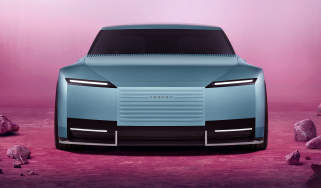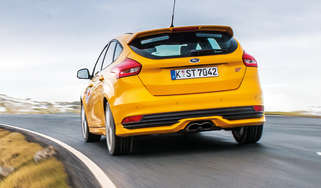New big cat at Jaguar
David Smith, on the company’s plans to move further upmarket
David Smith and Ratan Tata’s logic is impeccable: Jaguar is a match for almost anyone when it comes to heritage and history – the E-type, XJ13 and a string of Le Mans victories just for starters – so why not exploit it to the full?
That logic is to be put into practice under the ownership of India’s Tata group. Sometime within the next few years – Smith tells evo it is too early to talk about precise dates or potential model line-ups – Jaguar will lope upwards into the rarefied atmosphere of the £100,000-plus new-car market; territory currently occupied by just a small handful of Mercedes-Benz and Porsche models, plus the specialists such as Bentley, Aston Martin and Ferrari.
Smith, in his first interview since being made permanent chief executive of Jaguar Land Rover following the untimely death of much-respected predecessor Geoff Polites, makes it clear that there are no plans to vacate most of Jaguar’s existing market haunts, with the notable exception of dropping the lacklustre X-type. The XF range, which is already rolling in the cash in satisfying amounts, will stay in place, giving a pricing start point for Jaguars in the UK of around £35,000. There will remain, also, the current crossover, in pricing terms, between the top XFs and the lower rungs of the XJ range, with what is claimed by design chief Ian Callum to be a ‘stunning’ XJ replacement due next year. The XK range also stays, although it is expected to be moved further upmarket with a 500-plus brake horsepower version within the next year.
But even the most bells-and-whistles -laden cars of the current Jaguar range currently top out at a smidgen under £80,000, and the most expensive Range Rover costs £72,000 – ‘so we can go a lot further up the market than we are now,’ Smith insists. ‘Both Jaguar and Land Rover, through the Range Rover brand, should be able to produce very credible products to appeal to people in those markets.’
It is on being asked precisely how this is to be done that Smith clams up. Nor is he inclined to comment on some of the more excitable rumours running around about what Jaguar Land Rover and Tata are poised to do, now that the dust is settling on Tata’s $2.3bn purchase of JLR in April.
And rumours there are aplenty, some sparked off by the more excitable executives at Tata’s own corporate AGM in July. Examples: Ratan Tata intends to revive Daimler as a ‘flagship’ brand; Jaguar is to return to racing as a means of creating modern ‘heritage’; it is hastening forward a separate, lightweight aluminium two-seater from the XK which will be the true successor to the E-type; Tata is putting up £1bn to let Jaguar off the leash and fulfil all the ambitions it has had to suppress while under the ownership of cash-strapped Ford. About the only suggestions the rumour-mill has left out are a revival of the Lanchester and Rover brands – which like Daimler are owned by JLR, and, hence, now Tata.
For the most part, it’s all sheer wishful thinking – not least about the investment cash. Smith, who says that JLR will be funding its investment programme out of earnings, gently suggests that, since Tata had to organise substantial funding just to buy JLR, it is hardly likely to have a billion quid tucked in its back pocket for JLR, no matter how much Ratan Tata wishes that to be the case. There is no doubt that Mr T – a real car enthusiast – would love to give Jaguar its head without cash worries, but with the possible exception of the lightweight two-seater, it is all – for the moment – a wish list.
More important to Smith is that he believes JLR will be allowed to become a much quicker-acting and more flexible business. ‘Tata wants us to be autonomous,’ he says, ‘and I’ve got all the executive authority I need to make both the day-to-day and the long-term executive decisions without having to consult with Ratan and Ravi [Kant, Tata Automotive’s chief executive].’







